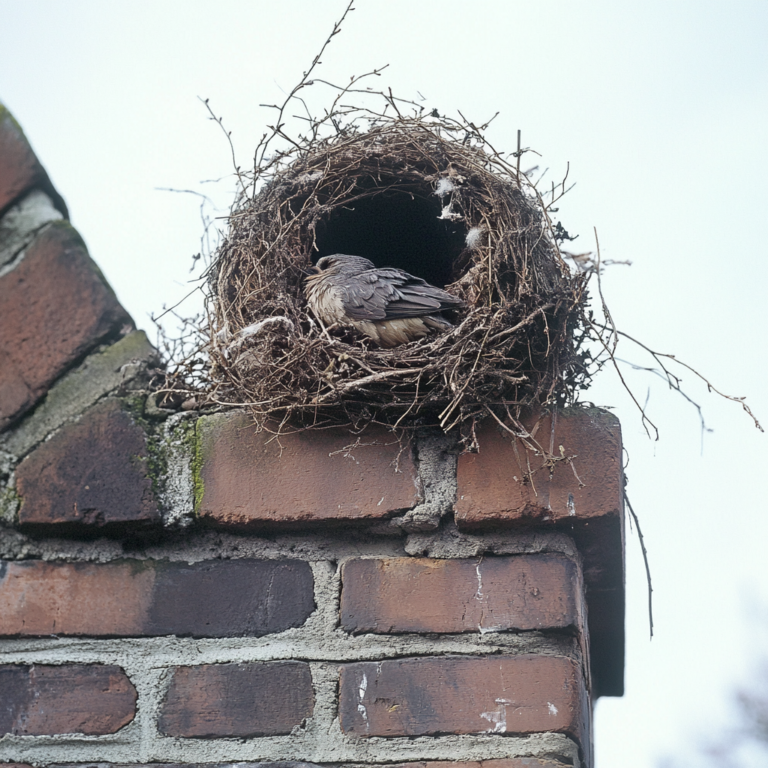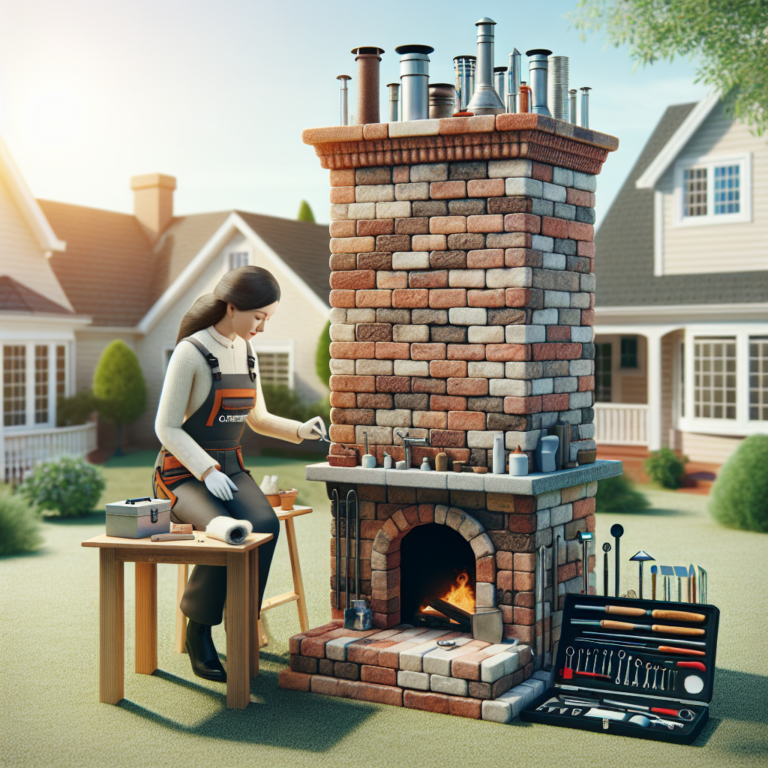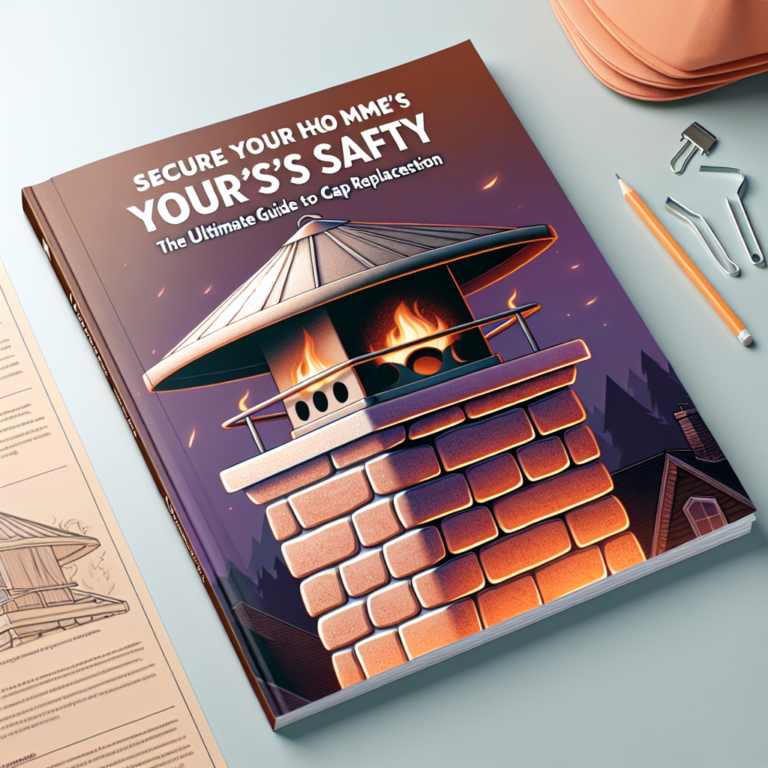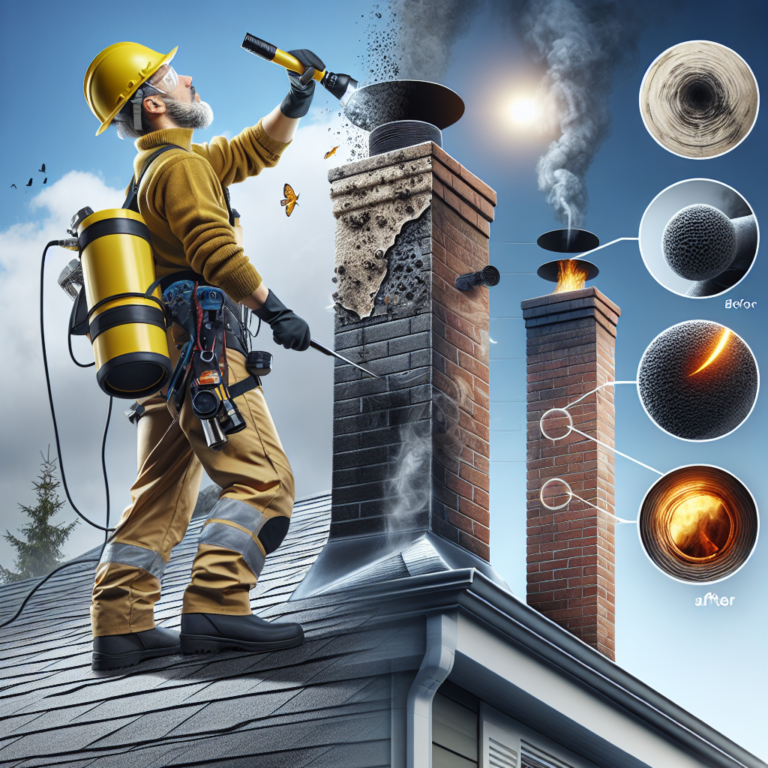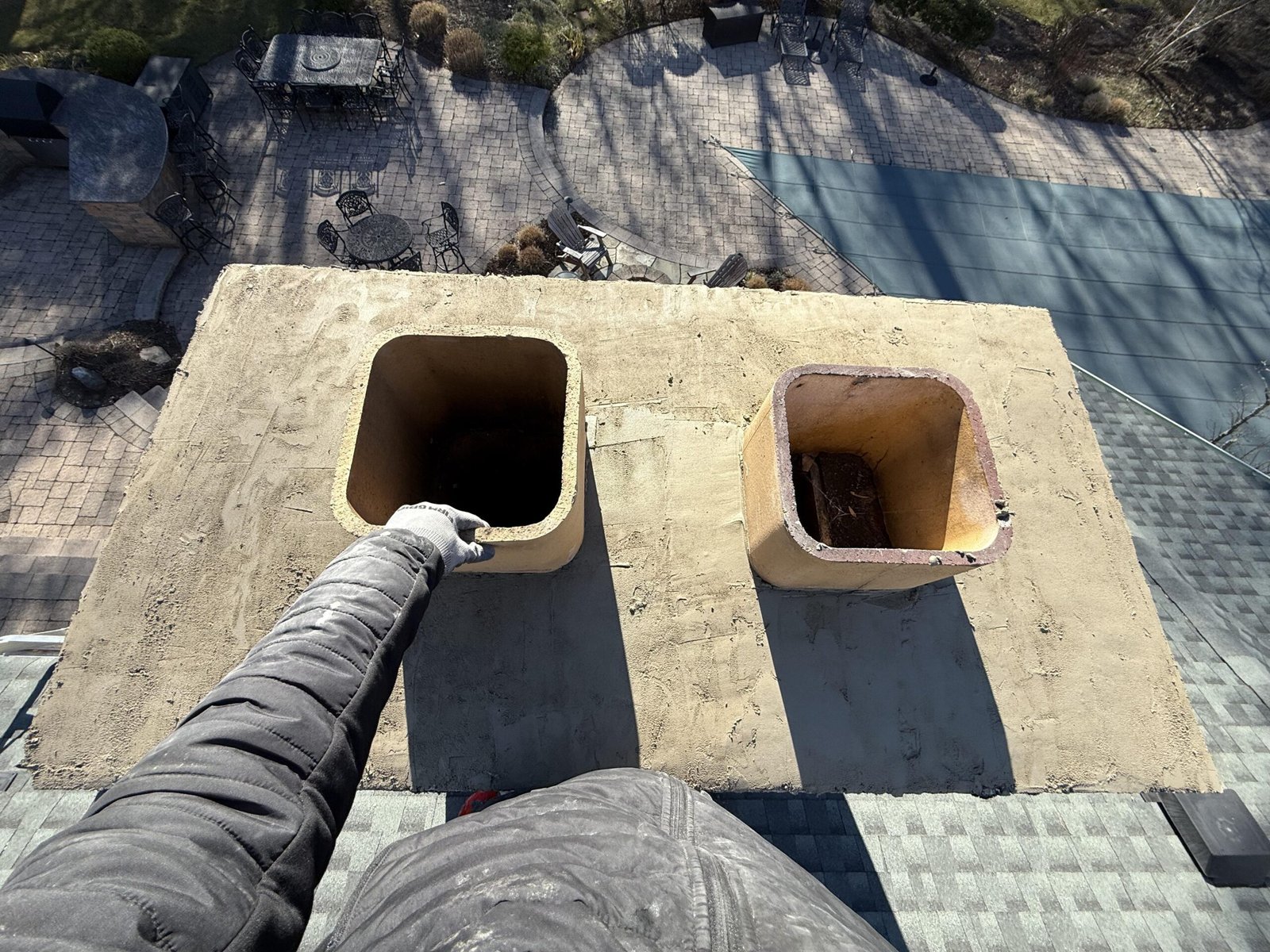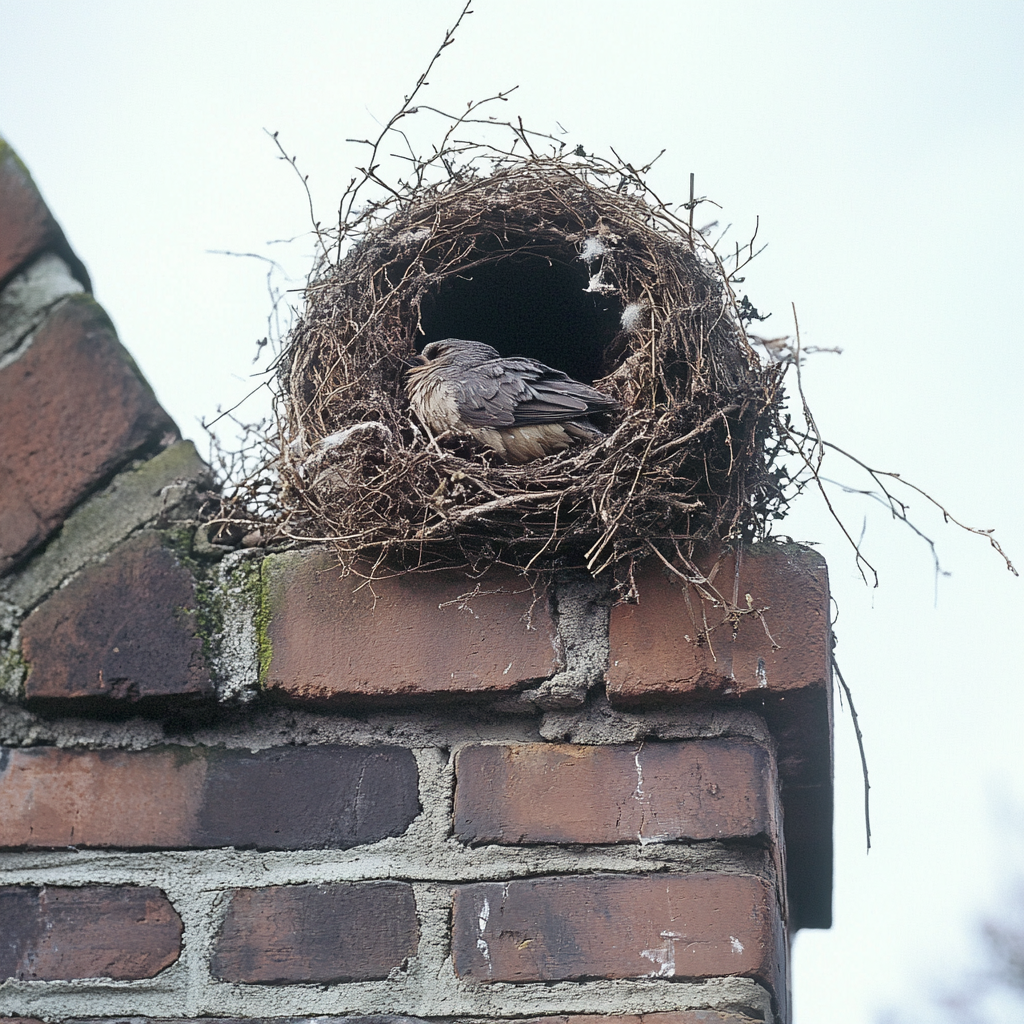-
Table of Contents
Clear Your Chimney, Protect Your Home: Expert Nest Removal & wildlife prevention.
Professional chimney nest removal and wildlife prevention services are essential for maintaining the safety and integrity of your home. These services focus on the safe extraction of nests built by birds and other wildlife within chimneys, which can pose significant fire hazards and obstruct proper ventilation. Additionally, wildlife prevention strategies are implemented to deter animals from entering chimneys and other vulnerable areas of the home, ensuring a secure living environment. By employing trained professionals, homeowners can protect their property from potential damage and health risks associated with wildlife infestations.
Effective Chimney Nest Removal Techniques for Homeowners
When it comes to maintaining a safe and functional home, one often overlooked aspect is the chimney. While it serves as a vital component for venting smoke and gases from fireplaces and heating systems, it can also become a nesting site for various wildlife, including birds, squirrels, and raccoons. These animals may find the warmth and shelter of a chimney appealing, but their presence can lead to significant issues, including blockages, fire hazards, and even structural damage. Therefore, effective chimney nest removal techniques are essential for homeowners who wish to safeguard their property and ensure the proper functioning of their heating systems.
To begin with, it is crucial for homeowners to recognize the signs of a nest in their chimney. Common indicators include unusual noises, such as chirping or scratching sounds, especially during the spring and summer months when many animals are nesting. Additionally, homeowners may notice debris or nesting materials, such as twigs and leaves, accumulating at the top of the chimney or around the flue. If any of these signs are present, it is advisable to take action promptly to prevent further complications.
One of the most effective techniques for chimney nest removal is to enlist the help of a professional wildlife removal service. These experts are trained to handle various species and understand the legal regulations surrounding wildlife removal. They can safely and humanely remove the nest and any animals present, ensuring that the process is conducted in compliance with local laws. Moreover, professionals are equipped with the necessary tools and safety gear to access the chimney safely, minimizing the risk of injury or damage to the home.
In addition to professional removal, homeowners can take proactive measures to prevent wildlife from nesting in their chimneys in the first place. Installing a chimney cap is one of the most effective deterrents. A chimney cap not only prevents animals from entering but also keeps out debris and rain, which can contribute to chimney deterioration. It is essential to choose a cap that is appropriately sized and made from durable materials to withstand the elements.
Furthermore, regular chimney inspections and cleanings are vital in maintaining a safe and functional chimney. By scheduling annual inspections with a certified chimney sweep, homeowners can identify potential issues before they escalate. During these inspections, professionals can check for blockages, structural damage, and signs of wildlife intrusion. Regular cleanings also help remove soot and creosote buildup, which can pose fire hazards.
Another important aspect of wildlife prevention is ensuring that the surrounding environment is not conducive to nesting. Homeowners should trim back overhanging branches and remove any nearby debris that could provide shelter for animals. Additionally, securing trash bins and removing food sources can help deter wildlife from approaching the home.
In conclusion, effective chimney nest removal techniques are essential for homeowners who want to protect their property from the dangers associated with wildlife nesting. By recognizing the signs of a nest, seeking professional assistance, and implementing preventive measures, homeowners can ensure their chimneys remain safe and functional. Regular maintenance and vigilance are key to preventing wildlife intrusion, ultimately contributing to a safer and more comfortable living environment.
Essential Wildlife Prevention Strategies for Your Chimney
Chimneys, while essential for venting smoke and gases from fireplaces and heating systems, can also become unintended habitats for wildlife. Animals such as birds, raccoons, and squirrels often seek refuge in chimneys, drawn by warmth and shelter. This not only poses a risk to the animals but can also lead to significant issues for homeowners, including blockages, fire hazards, and structural damage. Therefore, implementing effective wildlife prevention strategies is crucial for maintaining a safe and functional chimney.
One of the most effective strategies for preventing wildlife from entering your chimney is the installation of a chimney cap. A chimney cap serves as a barrier, preventing animals from gaining access while still allowing smoke and gases to escape. These caps come in various designs and materials, ensuring that they can fit any chimney type. Additionally, a well-fitted chimney cap can also help keep out debris, such as leaves and twigs, which can contribute to blockages and create fire hazards.
In addition to installing a chimney cap, regular inspections and maintenance are essential components of wildlife prevention. Homeowners should schedule annual inspections to ensure that their chimneys are free from obstructions and in good condition. During these inspections, professionals can identify any signs of animal activity, such as droppings or nesting materials, and take appropriate action. Regular cleaning of the chimney flue is also vital, as soot and creosote buildup can create a welcoming environment for wildlife while increasing the risk of chimney fires.
Another important strategy is to secure the area around the chimney. This involves checking for any gaps or openings in the chimney structure and sealing them to prevent animals from entering. For instance, if there are cracks in the masonry or loose bricks, these should be repaired promptly. Additionally, homeowners should ensure that tree branches are trimmed back from the chimney, as overhanging branches can provide easy access for animals looking to nest.
Moreover, it is essential to be mindful of the surrounding environment. Keeping the yard tidy and free from food sources can deter wildlife from approaching the home. For example, securing trash bins, cleaning up pet food, and removing bird feeders can significantly reduce the likelihood of attracting animals. By creating an environment that is less appealing to wildlife, homeowners can further minimize the risk of animals seeking shelter in their chimneys.
If wildlife has already taken up residence in your chimney, it is crucial to address the situation promptly and humanely. Professional chimney services can assist with safe removal and relocation of the animals, ensuring that they are not harmed in the process. After removal, it is vital to implement preventive measures to avoid future infestations. This may include reinforcing chimney caps, sealing entry points, and maintaining regular inspections.
In conclusion, protecting your chimney from wildlife requires a combination of proactive measures and ongoing maintenance. By installing a chimney cap, conducting regular inspections, securing the surrounding area, and being mindful of the environment, homeowners can significantly reduce the risk of wildlife intrusion. Should an issue arise, seeking professional assistance ensures that both the animals and the integrity of the chimney are preserved. Ultimately, these strategies not only safeguard your home but also contribute to the well-being of local wildlife, promoting a harmonious coexistence.
The Importance of Professional Chimney Nest Removal Services
When it comes to maintaining a safe and functional home, many homeowners often overlook the importance of chimney maintenance, particularly the removal of nests that can accumulate within these structures. Professional chimney nest removal services play a crucial role in ensuring that your chimney remains clear and operational, while also preventing potential hazards associated with wildlife intrusion. As birds and other animals seek shelter, they may find their way into chimneys, leading to blockages that can cause smoke to back up into the home, creating a dangerous situation for residents.
One of the primary reasons to engage professional services for chimney nest removal is safety. A blocked chimney can lead to carbon monoxide buildup, which poses serious health risks. Carbon monoxide is a colorless, odorless gas that can be lethal in high concentrations. By ensuring that your chimney is free from nests and other debris, you significantly reduce the risk of this silent danger infiltrating your living space. Moreover, professionals are equipped with the right tools and expertise to safely remove nests without causing damage to the chimney structure itself.
In addition to safety concerns, the presence of nests can lead to structural damage over time. Birds and other wildlife can create significant messes, which may include droppings that can corrode chimney materials and lead to costly repairs. Furthermore, nests can obstruct the flue, preventing proper ventilation and leading to increased wear and tear on your heating system. By opting for professional chimney nest removal, homeowners can protect their investment and extend the lifespan of their chimney and heating appliances.
Another important aspect of professional chimney nest removal is the prevention of future wildlife intrusions. Many companies that specialize in this service also offer preventative measures, such as installing chimney caps or screens. These additions not only keep animals out but also prevent debris from entering the chimney, thereby enhancing its functionality. By taking proactive steps, homeowners can avoid the hassle and expense of repeated nest removals and the associated risks.
Moreover, professional services often include thorough inspections of the chimney and surrounding areas. This comprehensive approach allows technicians to identify potential vulnerabilities that could attract wildlife in the future. By addressing these issues early on, homeowners can create a less inviting environment for animals, thereby reducing the likelihood of nests forming again.
It is also worth noting that professional chimney nest removal services are often compliant with local wildlife regulations. Many species are protected by law, and improper removal can lead to legal repercussions. Professionals are trained to handle these situations ethically and responsibly, ensuring that any wildlife is treated in accordance with local guidelines. This not only protects the homeowner from potential fines but also contributes to the conservation of local ecosystems.
In conclusion, the importance of professional chimney nest removal services cannot be overstated. From ensuring the safety of your home to preventing structural damage and future wildlife intrusions, these services provide invaluable benefits. By investing in professional assistance, homeowners can enjoy peace of mind knowing that their chimneys are not only functional but also safe and secure. Ultimately, taking these proactive measures is a wise decision that protects both your home and the environment.
Q&A
1. What is professional chimney nest removal?
Professional chimney nest removal involves safely and effectively removing animal nests, such as those made by birds or squirrels, from chimneys to prevent blockages and potential fire hazards.
2. Why is wildlife prevention important for chimneys?
wildlife prevention is crucial because animals nesting in chimneys can obstruct airflow, leading to dangerous smoke buildup, and can also cause structural damage or fire risks if not addressed.
3. What methods are used for wildlife prevention in chimneys?
Common methods include installing chimney caps, screens, and guards to block access, as well as conducting regular inspections and maintenance to ensure chimneys remain wildlife-free.

